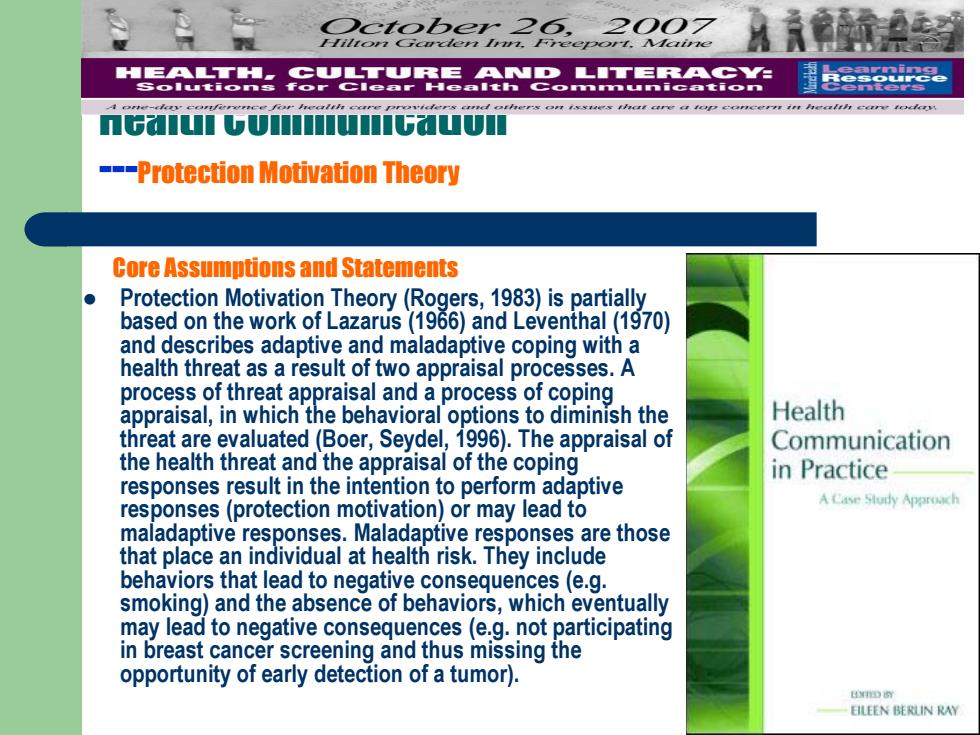
for ---Protection Motivation Theory Influencing and predicting behavior History and Orientation Protection Motivation Theory (PMT)was originally(Rogers,1975)proposed to provide conceptual clarity to the understanding of fear appeals.A later revision of Protection Motivation Theory(Rogers,1983)extended the theory to a more general theory of persuasive communication,with an emphasis on the lal ofb cognitive processes mediating behavioral 回 change
Health Communication ---Protection Motivation Theory Influencing and predicting behavior History and Orientation Protection Motivation Theory (PMT) was originally (Rogers, 1975) proposed to provide conceptual clarity to the understanding of fear appeals. A later revision of Protection Motivation Theory (Rogers, 1983) extended the theory to a more general theory of persuasive communication, with an emphasis on the cognitive processes mediating behavioral change

October 26.2007 reeport.Maine ---Protection Motivation Theory Core Assumptions and Statements ● Protection Motivation Theory(Rogers,1983)is partially based on the work of Lazarus (1966)and Leventhal(1970) and describes adaptive and maladaptive coping with a health threat as a result of two appraisal processes.A process of threat appraisal and a process of coping appraisal,in which the behavioral options to diminish the Health threat are evaluated(Boer,Seydel,1996).The appraisal of Communication the health threat and the appraisal of the coping in Practice responses result in the intention to perform adaptive responses(protection motivation)or may lead to A Case Study Approach maladaptive responses.Maladaptive responses are those that place an individual at health risk.They include behaviors that lead to negative consequences(e.g. smoking)and the absence of behaviors,which eventually may lead to negative consequences(e.g.not participating in breast cancer screening and thus missing the opportunity of early detection of a tumor). EILEEN B肤程IN RAY
Health Communication ---Protection Motivation Theory Core Assumptions and Statements Protection Motivation Theory (Rogers, 1983) is partially based on the work of Lazarus (1966) and Leventhal (1970) and describes adaptive and maladaptive coping with a health threat as a result of two appraisal processes. A process of threat appraisal and a process of coping appraisal, in which the behavioral options to diminish the threat are evaluated (Boer, Seydel, 1996). The appraisal of the health threat and the appraisal of the coping responses result in the intention to perform adaptive responses (protection motivation) or may lead to maladaptive responses. Maladaptive responses are those that place an individual at health risk. They include behaviors that lead to negative consequences (e.g. smoking) and the absence of behaviors, which eventually may lead to negative consequences (e.g. not participating in breast cancer screening and thus missing the opportunity of early detection of a tumor)